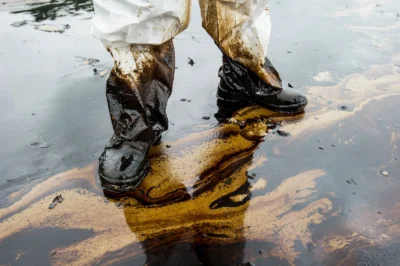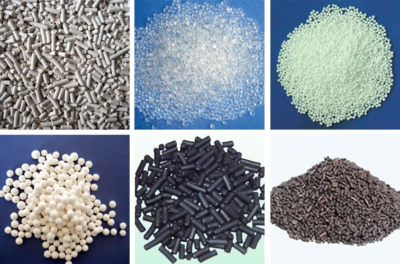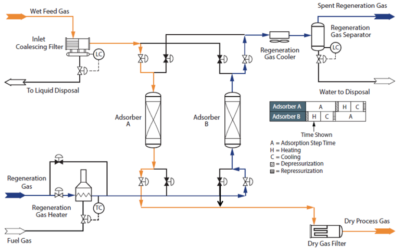Oil absorbent Booms, also known as Oil Spill Containment Booms, are mainly used to protect the marine environment from the damage caused by oil spills and unwanted debris. They are generally implemented in pipeline and intake projects, ports, harbors, marinas, and waterways, protecting these areas from oil spills and pollution. There is almost no other way to affordably and efficiently absorb oil spills and derbies in the water than these booms.

Oil absorbent booms applications
Oil booms are perfect for the control and cleaning up oil spills on water. These booms are used to handle all types of oil spills, such as fuel oils, gasoline, diesel, motor oil, jet fuel, hydraulic oil, and kerosene. Oil Booms are up for the task if you are dealing with an oil spill in the lake, sea, ocean, river, wastewater, pond, or stream.
It is important to note that these booms should not be used to clean up acids or water-based chemicals. They can, however, be used to contain and absorb large or small industrial hydrocarbon spills on land.
Different types of oil absorbent booms
There are mainly four types of oil booms that are designed for specific locations, environmental and climate conditions, and project durations.
Foam-Filled Oil Booms
This type is typically designed for static or low current applications. Hence, they are suitable for calm water environments and short-term installations. They can be set as a series of flat panels that float on the water that contain oil and debris. These panels are closed-cell to prevent any water.
Adventages:
Due to their lightweight construction, foam-Filled Oil Booms can be installed much faster than other oil booms. In addition, they have UV-stabilized PVC membrane fabric, increasing their service life significantly. They are also fitted with zip ties for easy coupling of the panels and quick utilization.
Solid Flotation oil Booms
It is a general-purpose boom. Solid flotation boom is suitable for long-term installations, providing years of performance. They can be installed in different water environments, ranging from low to high currents.
Adventages:
The boom is easy to install as it is designed with chain ballast, grab handles, and anchor points. This type also has a UV-stabilized PVC membrane that resists the effect of UV radiation.
They are available in different tensile strengths and sizes. They usually have a flat or cylindrical shape; however, we can design specific forms for custom requirements.
Harbor oil spill containment Booms
This type is designed to float in the water for years with the slightest maintenance. So it is suitable for permanent installations.
Adventages:
They are so stable in rough water, eliminating the need for bottom ballast to keep the boom upright. They are constructed of durable high-tensile material.
Inflatable oil booms
it is mainly used for emergency oil spills and protection.
Inflatable booms are lightweight and durable air-inflated booms that cover the growing demand for harbors, near-shore, and off-shore oil containment boom configurations.
Adventages:
It can be stored on boom reels. It is also a good choice for limited storage space. Rapid installation and air-inflated are other popular advantages of this type of oil boom.
These are the main categories of oil booms, but you may hear many other names, such as oil spill booms, sorbent booms, marine booms, marina booms, sea booms, or ocean booms. All in all, whatever you name them, whether you work construction site near the water or at a marina, you will need these booms when a spill occurs.
How Are oil absorbent Booms Made?
An oil boom is fundamentally made up of a plastic tarp with flotation embedded in the top. The trap also has a thinner skirt (draft) which is weighted on the bottom and sinks into the water. Most booms are about 60 cm wide and can be more than 300 m in length. They surround the oil and give you time to remove the oil from the water. Oil booms have pretty different appearances, but they all have the same essential design components and characteristics.
Here, you can find helpful information about how different parts of a boom work.
- The visible barrier above the water is the freeboard. It confines the oil, preventing it from splashing over the top.
- A draft or skirt is the flexible part of the boom and stops any oil from escaping underneath. It extends the wall of the freeboard below the water’s surface.
- Floatation provides buoyancy and prevents the boom from sinking. They are usually made as foam or air chambers.
- Ballast acts as an anchor against the above-water floatation. It helps weigh down the boom, maintaining its vertical position in the water.
- Horizontal tension cables hold the boom’s shape, giving it strength and stability against forces like wind, waves, and water currents.
- To create a necessary length, the border around an oil spill, or for towing a boom through the water, we need lateral connectors or couplings. They join boom sections together.
How Are oil absorbent Booms Made?
An oil boom is fundamentally made up of a plastic tarp with flotation embedded in the top. The trap also has a thinner skirt (draft) which is weighted on the bottom and sinks into the water. Most booms are about 60 cm wide and can be more than 300 m in length. They surround the oil and give you time to remove the oil from the water. Oil booms have pretty different appearances, but they all have the same essential design components and characteristics.

Here, you can find helpful information about how different parts of a boom work.
The visible barrier above the water is the freeboard. It confines the oil, preventing it from splashing over the top.
A draft or skirt is the flexible part of the boom and stops any oil from escaping underneath. It extends the wall of the freeboard below the water’s surface.
Floatation provides buoyancy and prevents the boom from sinking. They are usually made as foam or air chambers.
Ballast acts as an anchor against the above-water floatation. It helps weigh down the boom, maintaining its vertical position in the water.
Horizontal tension cables hold the boom’s shape, giving it strength and stability against forces like wind, waves, and water currents.
To create a necessary length, the border around an oil spill, or for towing a boom through the water, we need lateral connectors or couplings. They join boom sections together.
Our productions are incomparable in terms of quality, cost, and customization. We have gathered an outstanding technical team to make it possible to deal with any oil spill in water.
Keep in mind that we provide the full-service cycle of installation, maintenance, and removal of the oil, as well as product design and delivery. With several years of experience under our belt in this area, we know what is necessary for your projects. We also have an exceptional support group that you can count on at any time during the project.
In summary, we provide a wide variety of oil booms that can be used for;
Emergency oil spill in the lake, sea, ocean, river, wastewater, pond, or stream
Marine fuelling spill
Coastal and nearshore pollution
Litter collection
River water intake debris and oil deflection
Large, medium, or short contracting works near watercourses

Advantages of Our Oil Booms in a look:
Easy to install
Cost effective
Having super absorbent polypropylene construction
Will float on water even if it is saturated with hydrocarbons
Having Strong outer mesh construction
Being designed with steel clips for easy connection
Ship to all countries






